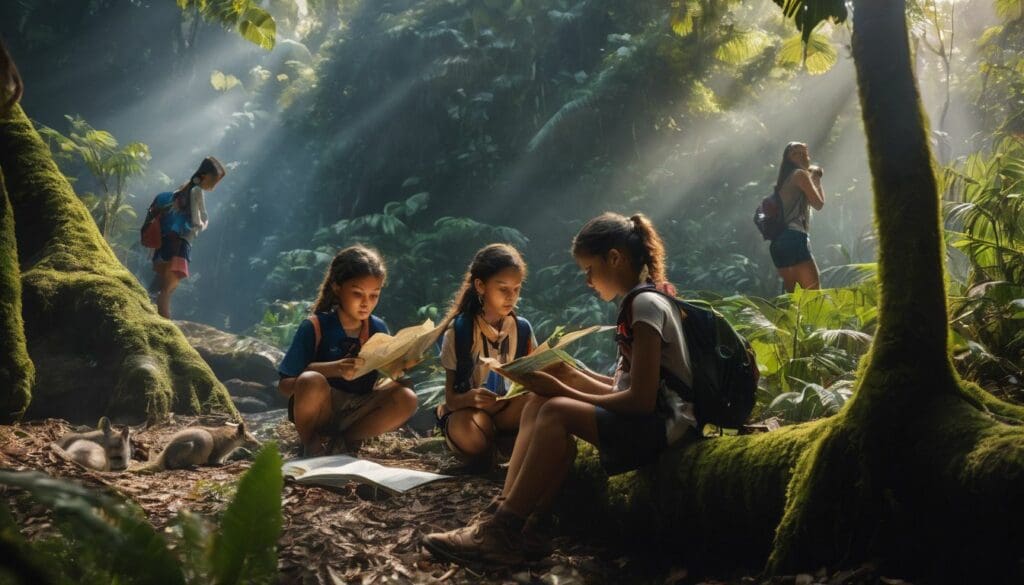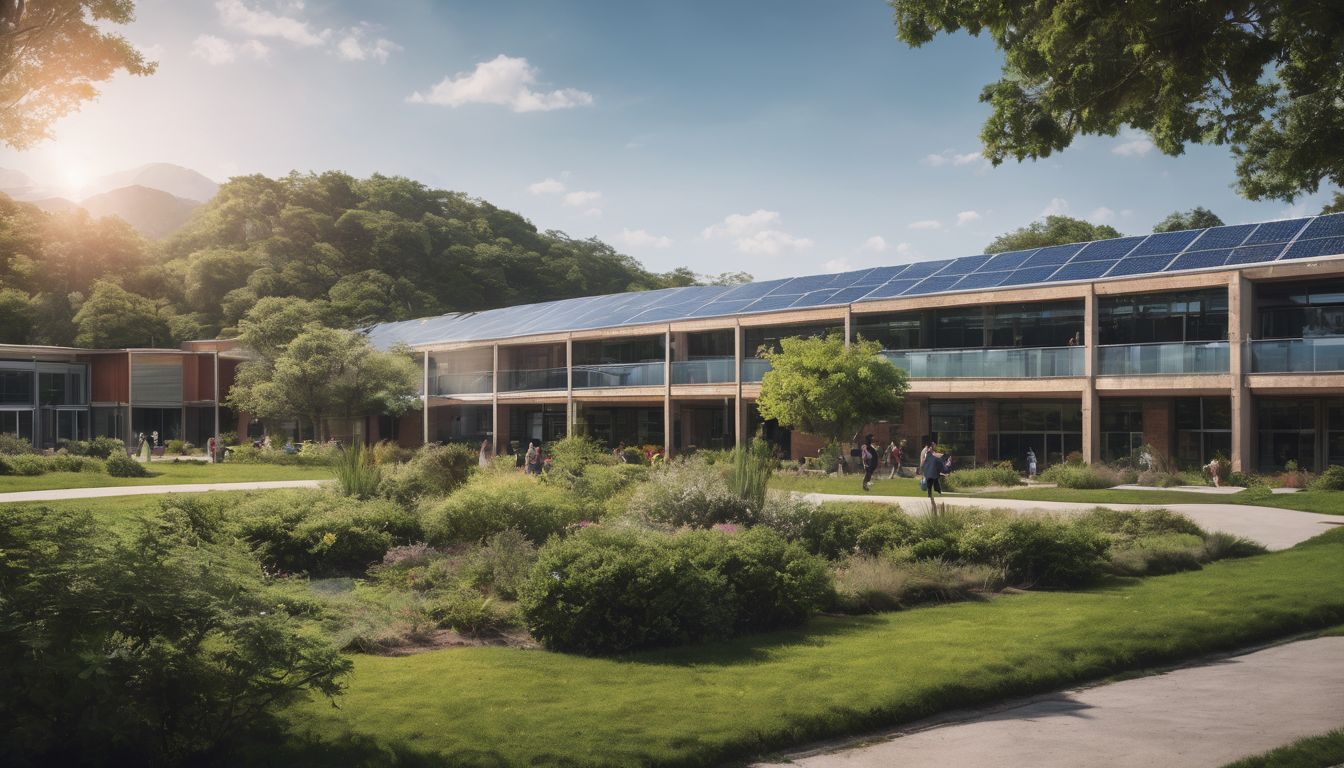Wildlife across the globe faces threats like never before, from habitat loss to climate change. Education has the power to turn the tide for endangered species and preserve biodiversity.
This article will explore educational strategies that empower individuals to contribute effectively to wildlife conservation. Let’s dive into how learning shapes our planet’s future.
Key Takeaways
- Education shapes our future conservation efforts by giving people the knowledge to act wisely in protecting ecosystems and biodiversity.
- AZA Accredited institutions and schools integrate conservation into their curricula, fostering early environmental responsibility and awareness.
- Zoos and aquariums offer engaging educational experiences, crucial for inspiring action towards wildlife preservation and responsible stewardship.
- Participating in community events, supporting local organisations, educating others, and connecting with nature can all promote responsible stewardship of our environment.
- Research shows that integrating conservation education into school lessons increases students’ willingness to participate in eco-friendly activities.
The Importance of Education in Wildlife Conservation
Moving from a broad overview to a focused lens, education emerges as a cornerstone in safeguarding our planet’s diverse species and habitats. It fuels wildlife preservation efforts by empowering people with the knowledge needed to make informed decisions.
Through learning about biodiversity conservation, individuals grasp how their actions impact ecosystems and the myriad forms of life they sustain.
Education ignites ecological awareness, prompting communities to engage in habitat protection and sustainable living practices. By instilling an appreciation for nature’s intricate web of life at an early age, schools lay the groundwork for future generations committed to animal welfare and environmental stewardship.
These educated citizens become the driving force behind robust conservation efforts, advocating for policies that prioritise biodiversity protection and sustainable development.
Education Programmes for PreK-12 and Higher Education
AZA Accredited Institutions provide educational programmes for all ages, while schools around the world benefit from teaching conservation as part of their curriculum. These programmes help to instil a sense of environmental responsibility and awareness at an early age.
AZA Accredited Institutions
AZA Accredited institutions play a crucial role in wildlife conservation by providing educational programmes that raise awareness about biodiversity, habitat preservation, and wildlife management.
These institutions offer engaging opportunities for visitors to learn about ecosystems and the importance of ecological balance. Through interactive exhibits and educational workshops, AZA Accredited institutions inspire individuals to become responsible stewards of the environment, cultivating a deeper understanding of conservation efforts.
Furthermore, these accredited institutions collaborate with schools and educators to develop curriculum-aligned resources that promote environmental education from an early age. By partnering with AZA Accredited institutions, educators can empower students with knowledge on conservation principles and wildlife preservation, fostering a generation committed to safeguarding our planet’s natural heritage.
Benefits of Teaching Conservation in Schools
Teaching conservation in schools offers numerous benefits such as fostering a sense of responsibility towards the environment and wildlife. It also helps in nurturing future conservation leaders.
- It instils a sense of stewardship and empathy towards wildlife from a young age, encouraging students to actively participate in conservation efforts.
- By integrating conservation education into the curriculum, students gain a deeper understanding of ecosystems, biodiversity, and the interconnectedness of all living organisms.
- Teaching conservation in schools provides opportunities for hands – on learning and encourages students to develop critical thinking skills related to environmental issues.
- It also raises awareness about the importance of preserving natural habitats and the impact of human activities on wildlife, ultimately promoting sustainable practices.
- Additionally, it empowers students to make informed decisions and take actions that contribute to biodiversity conservation and overall environmental sustainability.
Conservation Education in Action
Conservation education plays a crucial role in shaping public attitudes and behaviours towards wildlife and the environment. Zoos and aquariums are key players in promoting responsible stewardship through interactive exhibits, educational programmes, and outreach initiatives.
Impact on Public Attitudes and Behaviours
Public attitudes and behaviours towards wildlife conservation are significantly influenced by education. Education fosters an understanding of the interconnectedness of ecosystems, instilling a sense of responsibility for conservation efforts.
Nature education plays a pivotal role in cultivating environmentally conscious individuals who actively support biodiversity preservation. By promoting awareness and knowledge through educational initiatives, communities are empowered to make informed decisions that contribute to the protection of natural habitats.
Furthermore, conservation education encourages the adoption of responsible stewardship practices among individuals. It emphasises the importance of sustainable living and ethical interactions with wildlife.
Role of Zoos and Aquariums
Zoos and aquariums play a crucial role in wildlife conservation by offering immersive educational experiences to visitors. These institutions provide firsthand encounters with animals, raising awareness about the importance of biodiversity and ecosystem preservation.
Through interactive exhibits and educational programs, zoos and aquariums inspire a sense of responsibility towards conservation efforts. They actively contribute to species protection through breeding programs and research initiatives, fostering an understanding of the delicate balance within ecosystems.
Engaging with these institutions helps individuals develop a deeper appreciation for wildlife and understand their role in supporting conservation efforts. Zoos and aquariums serve as vital platforms for promoting environmental stewardship, encouraging visitors to take an active part in preserving natural habitats.
Ways to Promote Responsible Stewardship
- Engage in community clean – up events to preserve wildlife habitats and prevent pollution.
- Support local conservation organisations through volunteer work or donations to fund critical initiatives.
- Advocate for sustainable practices such as reducing plastic use and supporting ethical wildlife tourism.
- Educate others about the impact of human activities on ecosystems and encourage environmentally-friendly choices.
- Foster a connection with nature by participating in outdoor activities such as birdwatching, hiking, or gardening.
- Take part in educational workshops or seminars focused on wildlife conservation and sustainable living practices.
Research on the Role of Education in Biodiversity Conservation
Recent research has highlighted the positive impact of education on attitudes and behaviours towards wildlife conservation. To delve deeper into this important topic, continue reading to explore the latest trends and findings in conservation education.
Trends and Findings
Recent research indicates a growing interest in integrating conservation education into school curricula, leading to increased awareness and knowledge among students. Studies show that including wildlife conservation topics in science and environmental studies can significantly improve students’ attitudes towards conservation, with many expressing a greater willingness to engage in environmentally friendly behaviours.
Additionally, there is a noticeable trend towards the use of technology and digital platforms for delivering conservation education, enhancing accessibility and engagement among learners from diverse backgrounds.
Findings also highlight the importance of hands-on learning experiences in fostering an enduring commitment to wildlife preservation. Research reveals that immersive activities such as field trips to nature reserves and participation in citizen science projects have a profound impact on shaping individuals’ perceptions about the natural world.
Factors Affecting Knowledge and Attitudes
Various factors influence people’s knowledge and attitudes towards wildlife conservation. These include educational background, personal experiences with nature, cultural beliefs, and exposure to media.
Research indicates that individuals with higher levels of education tend to have a better understanding of conservation issues and are more likely to support initiatives aimed at protecting wildlife and habitats.
Additionally, positive encounters with nature during childhood can significantly shape one’s attitudes and sense of responsibility towards the environment.
Furthermore, cultural traditions and values play a crucial role in shaping perceptions about wildlife. For instance, communities with strong connections to nature may hold deep-rooted beliefs that contribute to sustainable stewardship practices.
Conclusion and Future Implications for Conservation Education
Encouraging environmental awareness from an early age can instil a sense of responsibility towards wildlife conservation. Educational programmes in schools and accredited institutions play a vital role in shaping the attitudes and behaviours of future generations.
Collaboration between educators, researchers, and conservationists will be crucial in enhancing the impact of conservation education efforts worldwide. Implementing innovative approaches to teaching about biodiversity and sustainability is essential for fostering a society that values and actively contributes to wildlife conservation.
FAQs
1. Why is education important in wildlife conservation?
Education plays a crucial role in wildlife conservation by teaching people about the importance of protecting animals and their habitats for our planet’s health.
2. How does learning about wildlife help to conserve it?
When students learn about different species and ecosystems, they become more aware of the threats to wildlife and are motivated to take part in conservation efforts.
3. Can educating children make a difference in preserving wildlife?
Yes, educating children on environmental issues equips them with knowledge for the future, inspiring them to become active participants in conserving nature as they grow up.
4. What can schools do to promote wildlife conservation?
Schools can include lessons on biodiversity, organise field trips to natural reserves, and encourage student-led projects that support local and global wildlife conservation initiatives.





